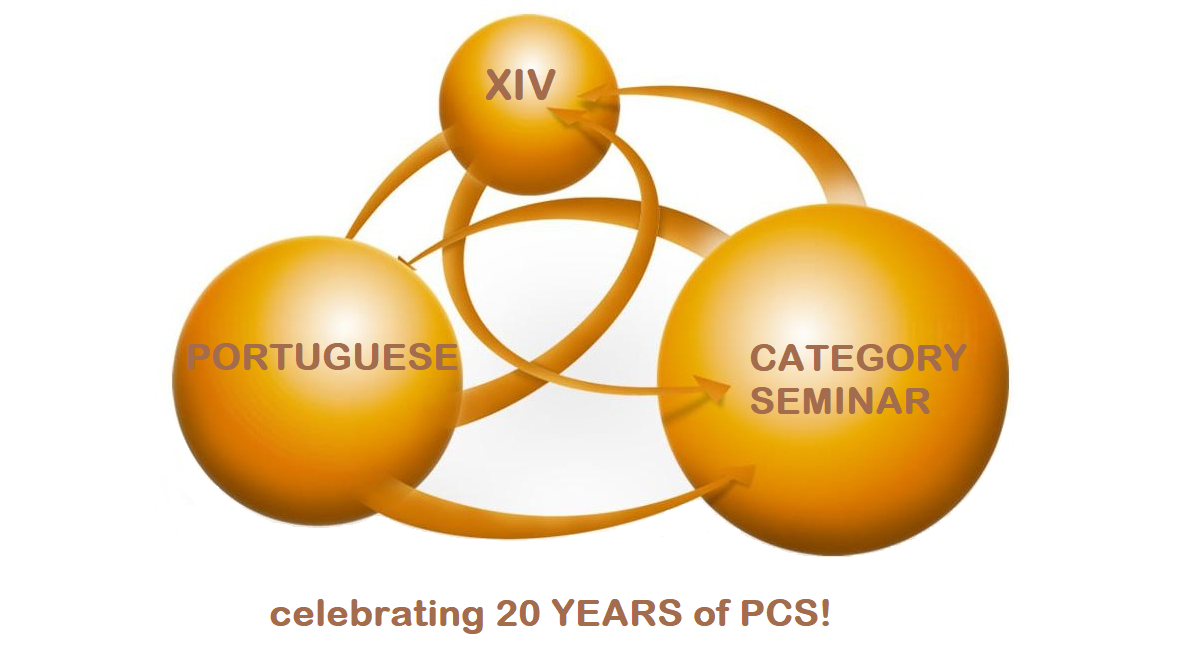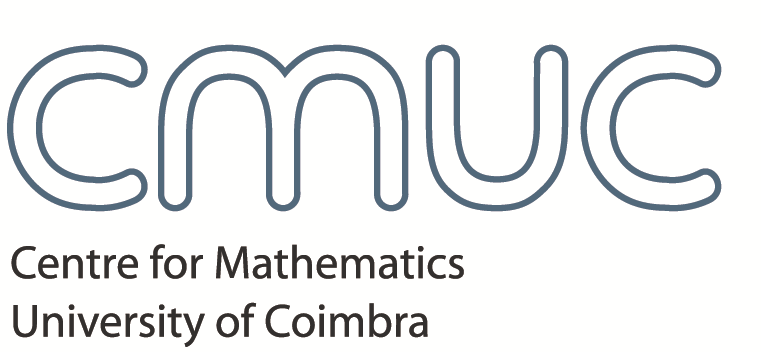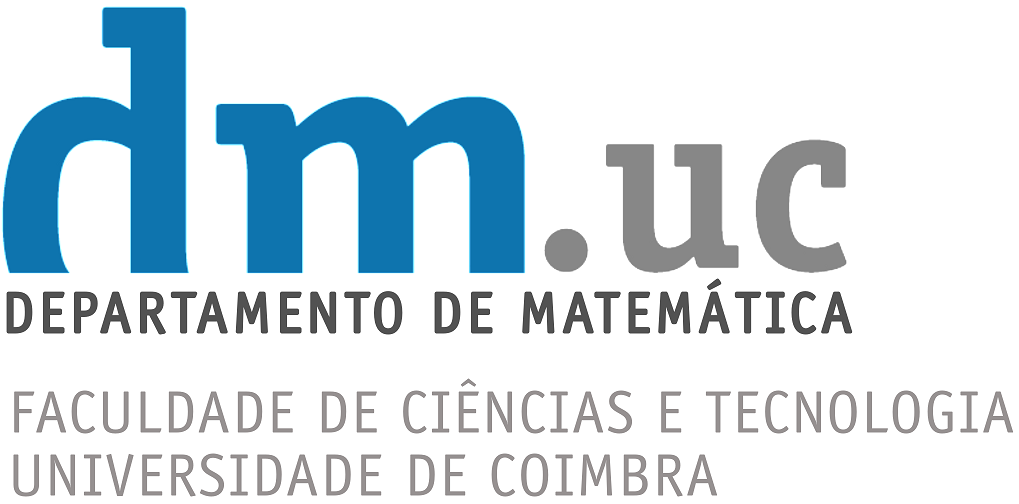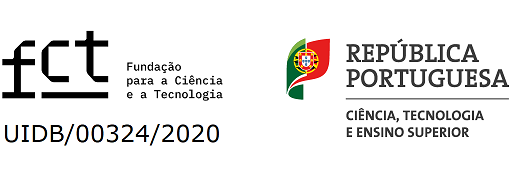
PROGRAMME and ABSTRACTS
| FRIDAY 13 | |
|---|---|
| 11:00-11:45 | Jiri Adámek, Sifted weighted colimits
In ordinary category theory a sifted colimit is a colimit of a diagram with a sifted domain D (i.e. colimits of diagrams in Set of scheme D commute with finite products). The two most important cases are filtered colimits and reflexive coequalizers. For example, a category K with finite coproducts has the free completion Sind(K) under sifted colimits given by Ind(K'), where K' is the free completion of K under reflexive coequalizers [1].
In enriched categories (over V) a weight R is called sifted if colimits in V weighted by R commute with finite products. Sifted colimits are then colimits weighted by sifted weights. For example if V=Pos is the cartesian closed category of posets, the two most important cases are filtered (conical) colimits and reflexive coinserters: for enriched categories K with finite tensors Sind(K)=Ind(K'), where K' is the free completion of K under reflexive coinserters. Bourke's PhD thesis presented interesting results about sifted colimits for V = small categories [2]. We study sifted colimits in general [3]. References: [1] J. Adámek, J. Rosicky and E. Vitale: Algebraic theories, Cambridge University Press 2011. [2] J. Bourke, Codescent objects in 2-dimensional universal algebra , PhD Thesis, University of Sydney, 2011. [3] J. Adamek, M. Dostal and J. Velebil: Sifted colimits, strongly finitary functors, and continuous algebras, in preparation. |
| 11:45-12:30 | Lurdes Sousa, Calculus of lax fractions in 2-categories
A category of fractions of a category X provides a universal way of converting the members of a certain class of morphisms of X into isomorphisms. In this talk I address the problem of a (bi)category of lax left fractions of a 2-category, that is, a universal way of converting given 1-cells of a 2-category into left adjoint right inverse 1-cells, and the corresponding calculus generalizing the well-known calculus of fractions. This is ongoing work with Graham Manuell. SLIDES |
| 12:30-14:00 | Lunch |
| 14:00-14:30 | Mack Matlabyana, On PF-frames
In this talk we present PF-frames as one of the generalisations
of P-frames. This are the pointfree extension of PFspaces introduced by
Azarpanah et al. [1]. We show that PF-frames are preserved by coz-onto
frame homomorphisms. We show also that a frame L is a PF-frame if and
only if for any two comaximal principal ideals of ℛL, one is semiprime and the other is convex.
References: [1] F. Azarpanah, R. Mohamadian and P. Monjezi, On PF-spaces, Topology and its Applications, 302 (2021), 1-8. SLIDES |
| 14:30-15:00 | Ulo Reimaa, Semidirect products and split extensions of categories
Consider a functor from one category to the category of monads on another category. We think of this functor as specifying an action of one category on the other. Given this data, one can construct the joint category of algebras over all the acting monads. From several aspects, this construction is reminiscent of the semidirect product of monoids. For example, there are associated diagrams of categories and functors that look like split extensions, and this semidirect product construction can be used to study such diagrams.
One of the motivations behind this work was the observation that the category of cocommutative Hopf algebras (over a nice field) can be expressed as a semidirect product of the category of Lie algebras and the category of groups. This is just a categorical reformulation of the Gabriel-Cartier-Konstant theorem, which was used in [2] to show that Lie algebras and groups form a torsion theory in the category of cocommutative Hopf algebras. We show that such a torsion theory can be found whenever this semidirect product of categories is used in the pointed setting. We will also look at examples related to Beck modules and Artin glueings [1], and show how this semidirect product construction can actually be thought of as a kind of a semidirect product of (co)monoids, when we equip our categories with either the cocartesian monoidal structure or the comonoidal structure given by the diagonal. Finally, we take a look at the more general two-sided semidirect product (aka. the Zappa–Szép product) version of this construction, of which the category of internal crossed modules [3] can be viewed as an example. This talk is based on joint work with Nelson Martins-Ferreira, Fosco Loregian, Graham Manuell, Greta Coraglia and Davide Castelnovo. References: [1] P.F. Faul, G. Manuell, Artin glueings of toposes as adjoint split extensions. J. Pure Appl. Algebra 227 (2023), no.5. [2] M. Gran, G. Kadjo, J. Vercruysse, A torsion theory in the category of cocommutative Hopf algebras. Appl. Categ. Structures 24 (2016), no.3. [3] G. Janelidze, Internal crossed modules. Georgian Math. J. 10 (2003), no.1. SLIDES |
| 15:00-15:30 | N. Martins Ferreira, Revisiting crossed modules and Whitehead sequences
This talk is based on the paper "Crossed Modules and Whitehead Sequences" [4]. The paper introduces the concept of Whitehead sequence as an extension of Porter's project, which began in 1982 [7]. The goal of this project is to generalize the Brown-Spencer result [1] from groups to other structures. The Brown-Spencer result establishes an equivalence between the category of crossed modules of groups and the category of internal groupoids. This connection between seemingly different objects is of great importance in algebraic and topological settings. The paper suggests the possibility of extending this result further by considering abstract categories and functors, rather than just internal actions over a semiabelian category [3].
While several generalizations for crossed modules have been proposed, they are often obtained by simplifying a description of an internal groupoid. This work takes a different perspective by studying a general system of categories and functors, focusing on a specific sequence of two morphisms called a Whitehead sequence. In this framework, a crossed module is defined as a Whitehead sequence for which an internal groupoid can be naturally associated. By establishing a categorical framework to understand the relationship between crossed modules and Whitehead sequences, new insights into homotopy theory and algebraic topology can be gained. Recent advancements in the study of unitary magmas [2,5,6] will be used as examples to illustrate the general transition from the classical case of groups to more general settings. References: [1] Brown, R., Spencer, C.B.: G-groupoids, crossed modules and the fundamental groupoid of a topological group. Indag. Math. (Proc.) 79(4), 296–302 (1976). [2] M. Gran, G. Janelidze and M. Sobral, Split extensions and semidirect products of unitary magmas, Commentationes Mathematicae Universitatis Carolinae, 60 (4) (2019) 509–527. [3] Janelidze, G.: Internal crossed modules. Georgian Math. J. 10(1), 99–114 (2003). [4] Martins-Ferreira, N.: Crossed modules and Whitehead sequences. J. Homotopy Relat. Struct. 11, 893–921 (2016). [5] Martins-Ferreira, N.: On semibiproducts of magmas and semigroups, Preprint (2022). arXiv: 2208.12704. [6] Martins-Ferreira, N.: Internal groupoids as involutive-2-links. Preprint (2023). arXiv: 2305.13537. [7] Porter, T.: Internal categories and crossed modules. Lect. Notes Math. 962, 249–255 (1982). |
| 15:30-16:00 | João Xarez, The monotone-light factorization for n-categories via n-preorders
It will be shown that the reflection nCat ⟶ nPreord of the category of all n-categories into the category of n-preorders determines a monotone-light factorization system on nCat, for every positive integer
n. In order to achieve such result it was also proved that the reflection nCat ⟶ nPreord has stable units, a stronger condition than admissibility in categorical Galois theory, and that the n-functors surjective
both on vertically composable triples of horizontally composable pairs
of n-cells, and on horizontally composable triples of vertically composable pairs of n-cells are effective descent morphisms in the category
of all n-categories nCat. This generalizes the results in our previous papers [5] and [6]. The characterization of this class of effective descent morphisms is a generalization of what was done in [6], considering a convenient description of the category of all n-categories as a full subcategory of a presheaf category, and using some results in [4]. In order to prove that the reflection of n-categories into n-preorders has stable units in the sense of [2] (see [1]), we took a very different path from the one trailed in [6]. In fact, we considered the category of all n-categories in the context of V-categories (see [3]). Note that, considering V = Set the category of sets and then iterating one obtains n-categories. Beginning with a symmetric monoidal adjunction ℂ ⟶ 𝕏 with certain properties, one derives another symmetric monoidal adjunction ℂ-Cat ⟶ 𝕏-Cat with the same properties between categories of all V-categories (V ∈{ℂ,𝕏}). In this context, if one begins with a reflection such that 𝕏 is a full replete subcategory of ℂ, the derived adjunction is also a reflection in which 𝕏-Cat is a full replete sub-category of ℂ-Cat. It follows trivially, according to the way limits are calculated in ℂ-Cat, provided they exist in ℂ, that semi-left-exactness (also called admissibility in categorical Galois theory) or the stable units property is inherited by the derived reflection. For instance, if one begins with the stable units reflection from the category of all categories into the category of all preorders, iterating one ends with a stable units reflection from nCat into nPreord. References: [1] Carboni, A.; Janelidze, G.; Kelly, G. M.; Paré R.. On localization and stabilization for factorization systems. App. Cat. Struct. 5 (1997) 1-58. [2] Cassidy, C.; Hébert, M.; Kelly, G. M.. Reflective subcategories, localizations and factorization systems. J. Austral. Math. Soc. 38A (1985) 287-329. [3] Kelly, G. M.. Basic concepts of enriched category theory, Cambridge University Press; London Mathematical Society Lecture Note Series, 1982. [4] Janelidze, G.; Sobral, M.; Tholen, W.. Beyond Barr Exactness: Effective Descent Morphisms, in Categorical Foundations. Special Topics in Order, Topology, Algebra and Sheaf Theory, Cambridge University Press, 2004. [5] Xarez, J. J.. The monotone-light factorization for categories via preorders, in Galois theory, Hopf algebras and semiabelian Categories, Fields Inst. Commun., 43, Amer. Math. Soc., Providence, RI, 2004. 533-541. [6] Xarez, J. J.. The monotone-light factorization for 2-categories via 2-preorders. Theory and Applications of Categories, 38 (2022), no. 31, 1209-1226. |
| 16:00-16:30 | Coffee Break |
| 16:30-17:00 | Rui Prezado, Cauchy completions and 𝒱-fully faithful lax epimorphisms
In his influential paper [Law73], Lawvere showed that a generalized notion of metric space can be
seen as a category enriched over the quantale of extended non-negative real numbers ℝ = [0,∞]. Due
to this breakthrough, many results and constructions on metric spaces were shown to have a categorical
analogue, and vice-versa.
Among such results, Lawvere showed that the notion of Cauchy completeness of (generalized) metric spaces could be considered in the much broader context of enriched category theory. One of the consequences of this perspective is that, for small 𝒱-categories 𝒞 and 𝒟, we have an equivalence of copresheaf categories 𝒱-CAT(𝒞,𝒱) ≃ 𝒱-CAT(𝒟,𝒱) if and only if 𝒞 and 𝒟 have equivalent Cauchy completions (when they exist). In particular, if we consider the embedding η:𝒞 ⟶ 𝒞 of a small 𝒱-category 𝒞 into its Cauchy completion 𝒞 (when it exists), then the change-of-base functor on copresheaf categories 𝒱-CAT(𝒞,𝒱) ⟶𝒱-CAT(𝒞,𝒱) is an equivalence. By the enriched Yoneda lemma, and the work carried out in [LS22], we conclude that η is a 𝒱-fully faithful lax epimorphism. Our goal is to exhibit the relationship between Cauchy completeness and 𝒱-fully faithful lax epimorphisms, worked out in [LPS23]. The equivalences of categories in the image of the 2-functor 𝒱-CAT(−,𝒱): 𝒱-Catop ⟶ CAT are characterized by the 𝒱-fully faithful lax epimorphisms between small 𝒱-categories. We also give a brief account on the application of this result to the descent theory in the 2-category 𝒱-Cat, and mention some work in progress with respect to extending these results to the context of (T,𝒱)-categories. References: [Law73] F. W. Lawvere. Metric spaces, generalized logic, and closed categories. Rend. Sem. Mat. Fis. Milano 43:135–166, 1972. [LS22] F. Lucatelli Nunes, L. Sousa. On lax epimorphisms and the associated factorization. J. Pure Appl. Algebra 226(12):107–126, 2022. [LPS23] F. Lucatelli Nunes, R. Prezado, L. Sousa. Cauchy completenes, lax epimorphisms, and effective descent for split fibrations. Bull. Belg. Math. Soc. Simon Stevin 30(1):130–139, 2023. SLIDES |
| 17:00-17:30 | F. Lucatelli Nunes, Freely generated bicartesian categories and exponentials
The study of freely generated categorical structures lies in the intersection of category
theory with logic, type theory, algebraic topology, programming language semantics,
and other subjects. However, the existing literature often falls short, particularly
in addressing the fundamental aspects. In our exploration of Grothendieck descent theory [1, 3], presentation of categorical structures [2], automatic differentiation [4], and denotational semantics [5, 6], we have unearthed insights into freely generated categorical structures and their presentations. In this talk, we intend to address some of these insights, focusing on very elementary aspects of freely generated bicartesian categories and exponentials. Our primary achievement lies in unraveling the exponentials of freely generated bicartesian categories. The talk is mostly based on [7] and ongoing work. References: [1] Fernando Lucatelli Nunes. Pseudo-Kan extensions and descent theory. Theory Appl. Categ. 33, 390-444 (2018). [2] Fernando Lucatelli Nunes. Freely generated n-categories, coinserters and presentations of low dimensional categories. arXiv:1704.04474. 2017. [3] Fernando Lucatelli Nunes. Semantic factorization and descent. Appl. Categ. Struct. 30, No. 6, 1393-1433. 2022. [4] Fernando Lucatelli Nunes and Matthijs Vákár. CHAD for Expressive Total Languages. Mathematical Structures in Computer Science, 33(4-5), 311-426. 2023. [5] Fernando Lucatelli Nunes and Matthijs Vákár. Automatic Differentiation for ML-family languages: correctness via logical relations. arXiv:2210.07724. 2022. [6] Fernando Lucatelli Nunes and Matthijs Vákár. Logical Relations for Partial Features and Automatic Differentiation Correctness. arXiv:2210.08530. 2022. [7] Fernando Lucatelli Nunes and Matthijs Vákár. Σ-tractible coproducts and Cartesian closure of Grothendieck constructions. To appear. |
| SATURDAY 14 | |
|---|---|
| 09:30-10:00 | Marino Gran, L-algebras, normality and exact completions
We relate the recent theory of L-algebras with some exactness properties and notions in categorical algebra. We observe that the category of L-algebras is subtractive and normal in the sense of Zurab Janelidze, but neither the category of L-algebras nor that of pre-L-algebras (also called unital cycloids in the literature) are Mal'tsev categories. The commutator of two ideals on an L-algebra is shown to coincide with their intersection. The variety of pre-L-algebras has been recently shown to be the exact completion of the quasi-variety of L-algebras [1]. This is a new example of a situation where the exact completion of a normal category is not normal (first observed in [2]). Under this respect, the normality property behaves quite differently from most of the classical exactness properties in categorical algebra, such as being subtractive, Mal'tsev or protomodular [3].
The talk is based on a joint work with Alberto Facchini and Mara Pompili [4]. References: [1] W. Rump, The category of L-algebras, Theory Appl. Categories 39 (2023) 598-624. [2] M. Gran and Z. Janelidze, Star-regularity and regular completions, J. Pure Appl. Algebra 218 (2014) 1771-1782. [3] M. Gran and S. Lack, Semi-localizations of semi-abelian categories, J. Algebra 454 (2016) 206-232. [4] A. Facchini, M. Gran and M. Pompili, Ideals and congruences in L-algebras and pre-L-algebras, arXiv:2305.19042, May 2023. SLIDES |
| 10:00-10:30 | Federico Campanini, Building pretorsion theories from torsion theories
Pretorsion theories are defined as "non-pointed torsion theories", where the zero object
and the zero morphisms are replaced by a class of "trivial" objects and a suitable ideal
of morphisms respectively. Thus, the notion of pretorsion theory can be defined in any
arbitrary category ℂ, starting from a pair (𝒯,ℱ) of full replete subcategories of ℂ where 𝒯
and ℱ consist of the classes of "torsion" and "torsion-free" objects, and whose intersection
defines the class of "trivial objects" [2].
In this talk, we present two ways of obtaining pretorsion theories starting from torsion
theories, so that many new examples of pretorsion theories can be given in pointed categories.
After recalling some key background on torsion and pretorsion theories, we shall
describe pretorsion theories coming from pairs of torsion theories. Lattices and chains of
torsion theories are widely studied topics and they are the perfect framework for applying
our result. Then, we shall show how to obtain pretorsion theories "extending" a torsion
theory with a Serre subcategory. We shall discuss some applications in representation
theory and in the framework of recollements of abelian categories.
References: [1] F. Borceux, F. Campanini and M. Gran, Pretorsion theories in lextensive categories, accepted on J. Israel Math (2023). https://arxiv.org/abs/2205.11054 [2] F. Campanini, F. Fedele, Building pretorsion theories from torsion theories, preprint. [3] A. Facchini, C.A. Finocchiaro and M. Gran, Pretorsion theories in general categories, J. Pure Appl. Algebra 225 (2) (2021) 106503. SLIDES |
| 10:30-11:00 | Coffee Break |
| 11:00-11:45 | Andrea Montoli, Homological lemmas in a non-pointed context
The classical homological lemmas have been shown to hold in the general context of the so-called homological categories, namely pointed, regular protomodular categories. We will show that suitable versions of such lemmas are still valid when the categories are not pointed, requiring instead that the unique morphism from the initial to the terminal object is a regular epimorphism, and replacing the zero object with a family of "trivial" objects that are the quotients of the initial one. These non-pointed homological lemmas are valid, for example, in every protomodular variety with more than one constant (e.g. unitary rings, Boolean algebras, Heyting algebras and MV-algebras) and in the dual of every elementary topos. Joint work with Andrea Cappelletti. |
| 11:45-12:30 | Dirk Hofmann, Cauchy completeness for normed categories
Lawvere's famous 1973-paper “Metric spaces, generalized logic, and closed
categories” has inspired numerous work connecting metric spaces with category
theory. One of the lesser known suggestions hinted at in this paper
is the notion of normed category: a category X where each hom-set X(A,B)
comes equipped with a norm X(A,B) ⟶ [0,∞],
subject to suitable axioms. Normed categories can be described as categories enriched in a certain category of normed sets, briefly mentioned by Lawvere (1973), and explicitly described in (Betti and Galuzzi 1975).
Having as starting point (Kubiś 2017), and also (Bonsangue, Breugel, and Rutten 1998), in this talk we analyse a possible notion of forward Cauchy colimit for normed categories and connect it to the notion of weighted colimit.
In this talk we report on joint work with Maria Manuel Clementino and
Walter Tholen.
References: Betti, Renato, and Galuzzi, Massimo (1975). Categorie normate. In: Bollettino dell’Unione Matematica Italiana 4.(11), pp. 66–75. Bonsangue, Marcello M., Breugel, Franck van, and Rutten, Jan (1998). Generalized metric spaces: completion, topology, and powerdomains via the Yoneda embedding. In: Theoretical Computer Science 193.(1-2), pp. 1–51. Kubiś, Wiesław (2017). Categories with norms. Tech. rep. arXiv: 1705.10189 [math.CT]. Lawvere, F. William (1973). Metric spaces, generalized logic, and closed categories. In: Rendiconti del Seminario Matemàtico e Fisico di Milano 43.(1), pp. 135–166. Republished in: Reprints in Theory and Applications of Categories, No. 1 (2002), 1–37. SLIDES |
Pdf files: programme, abstracts.


